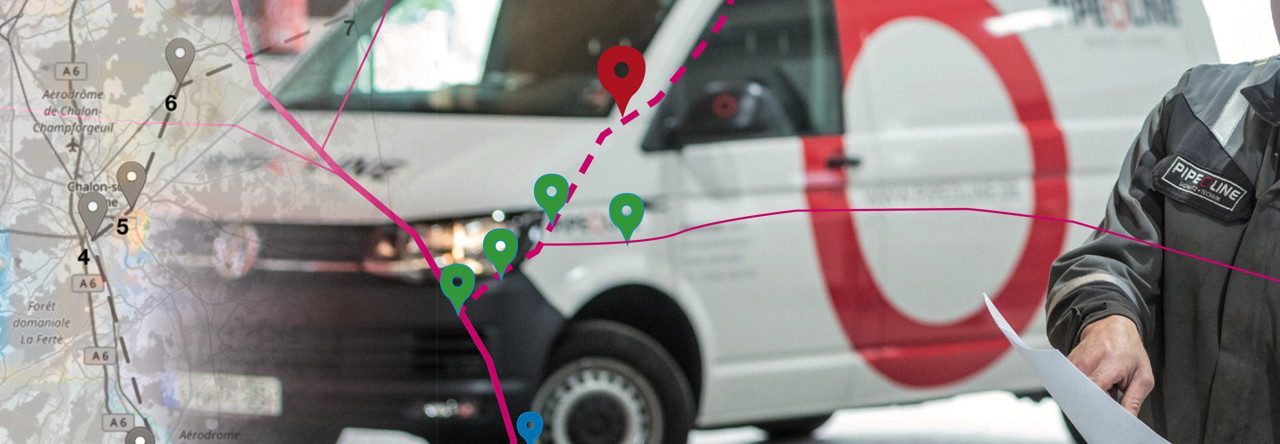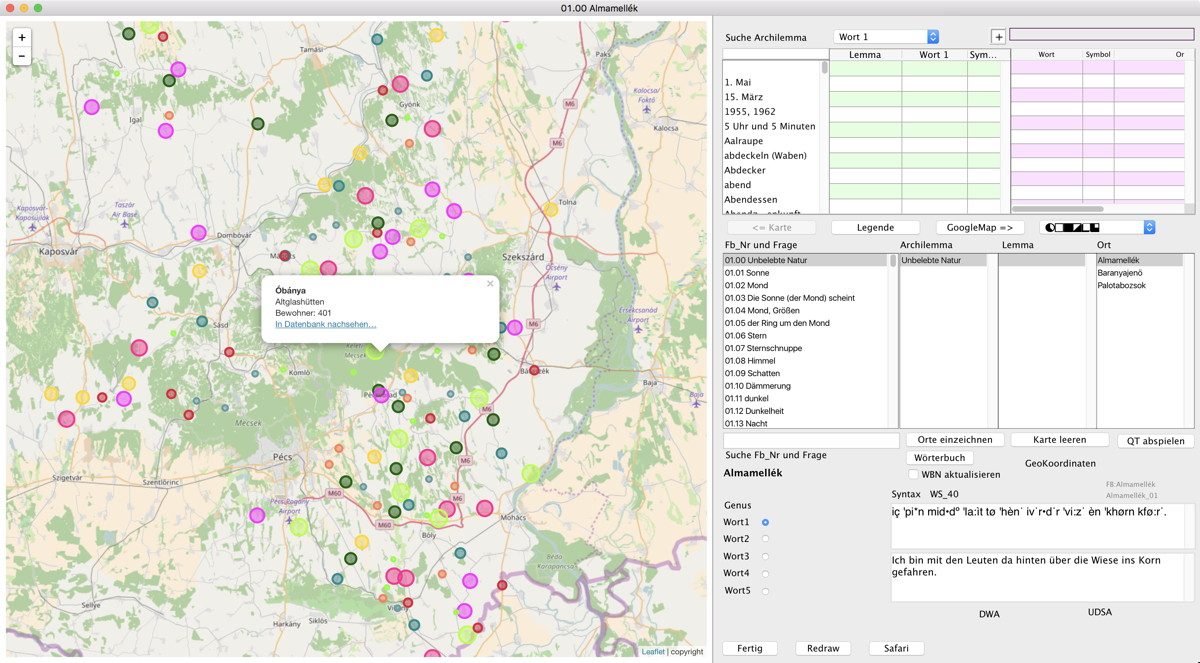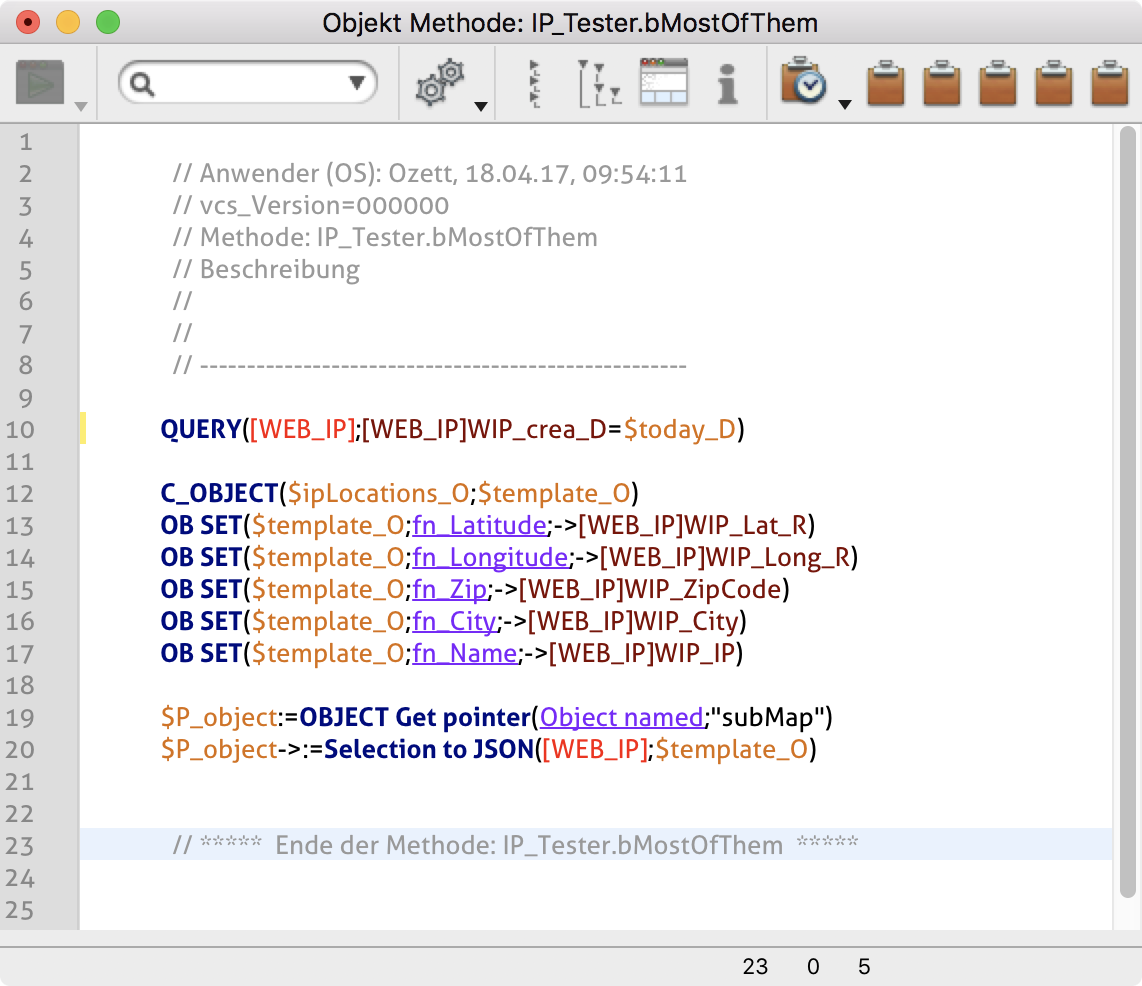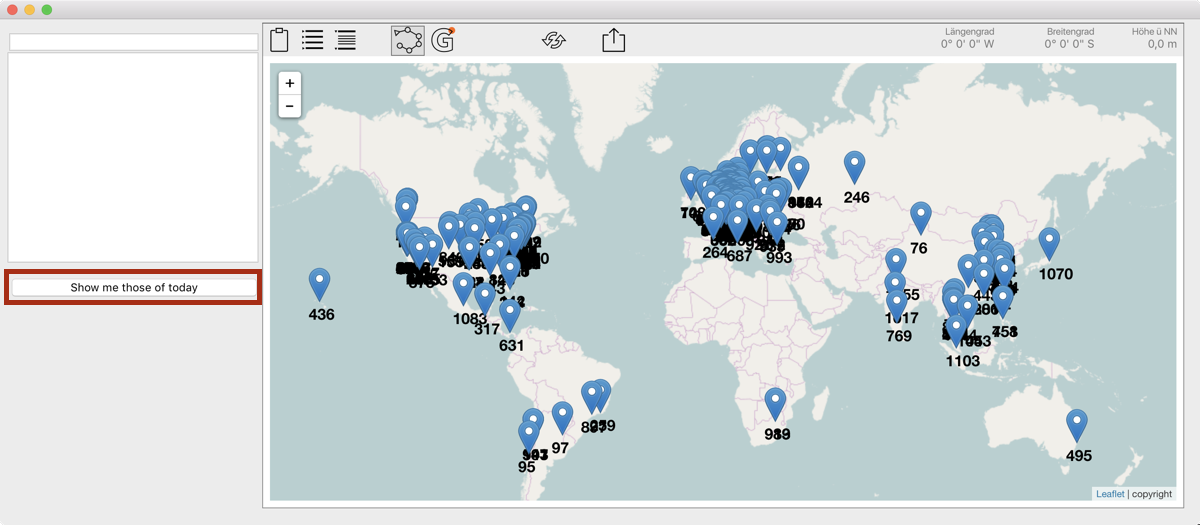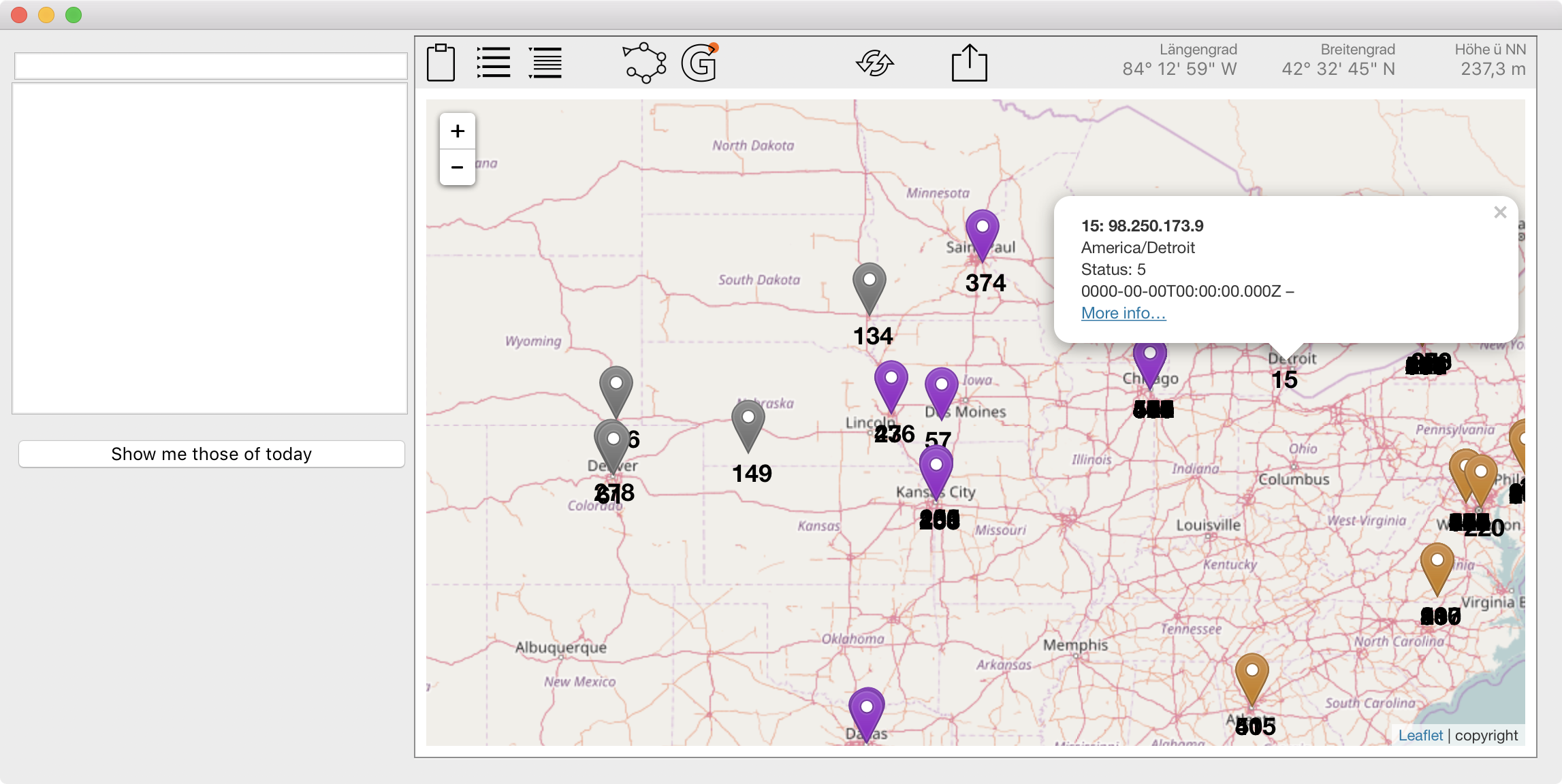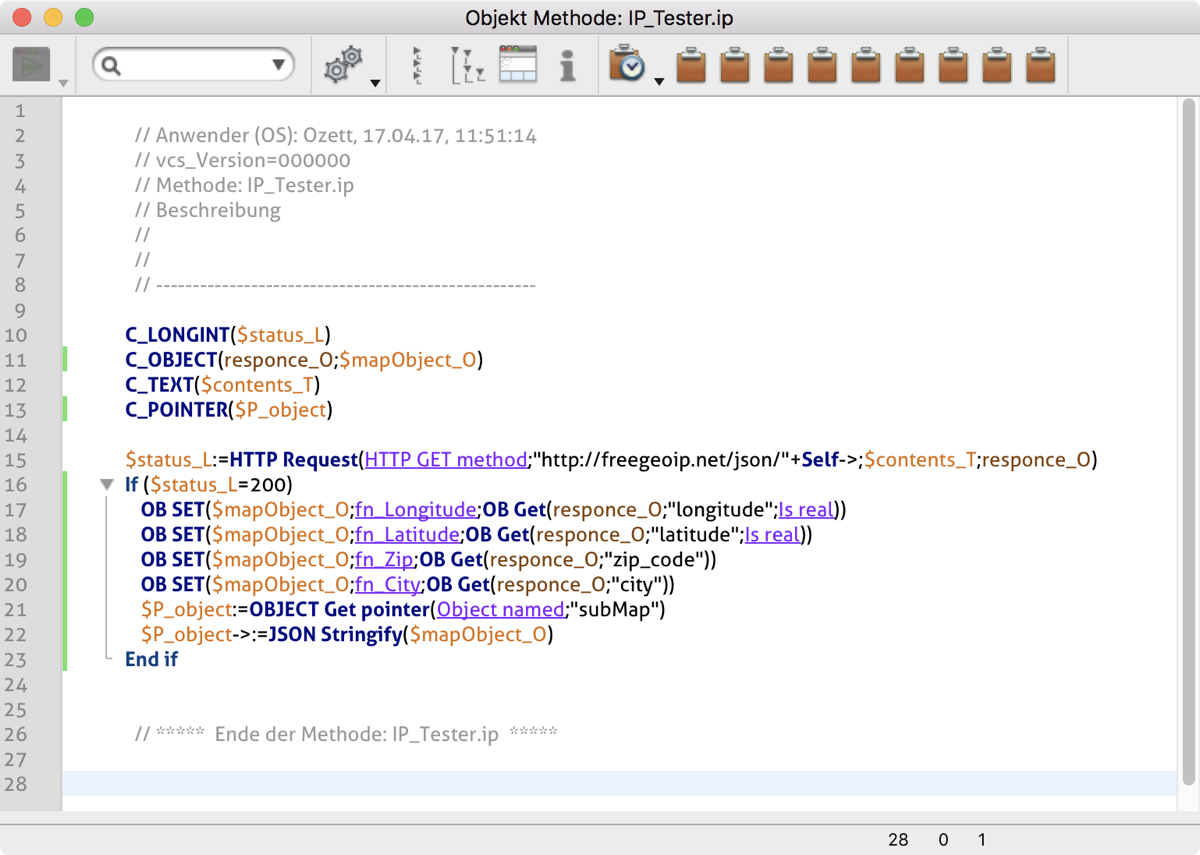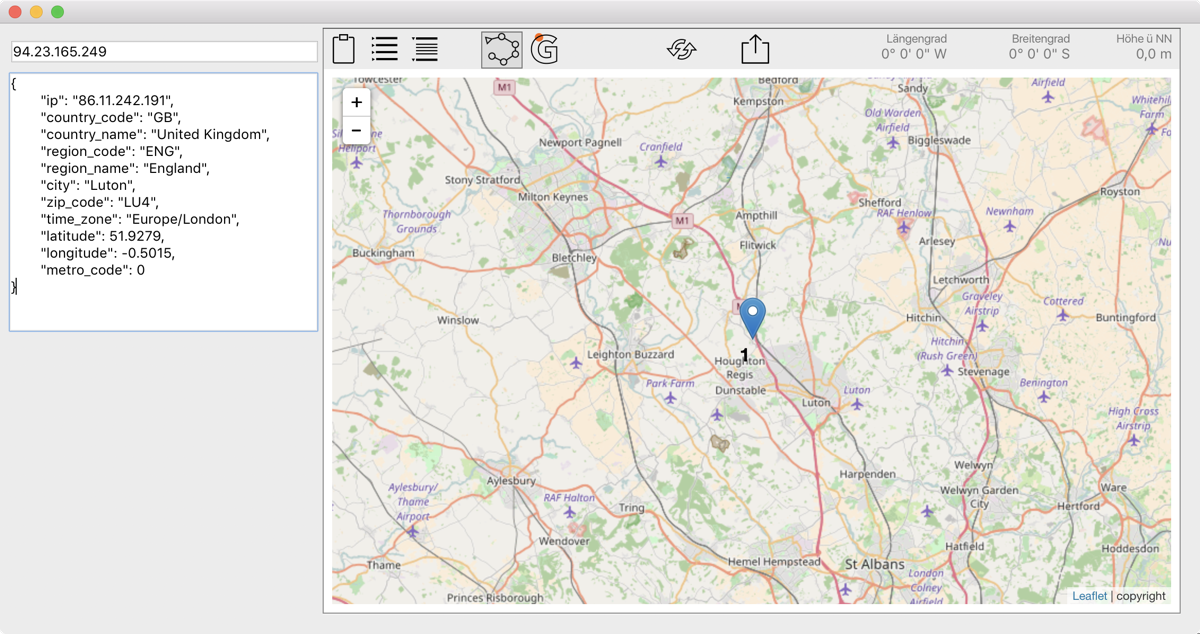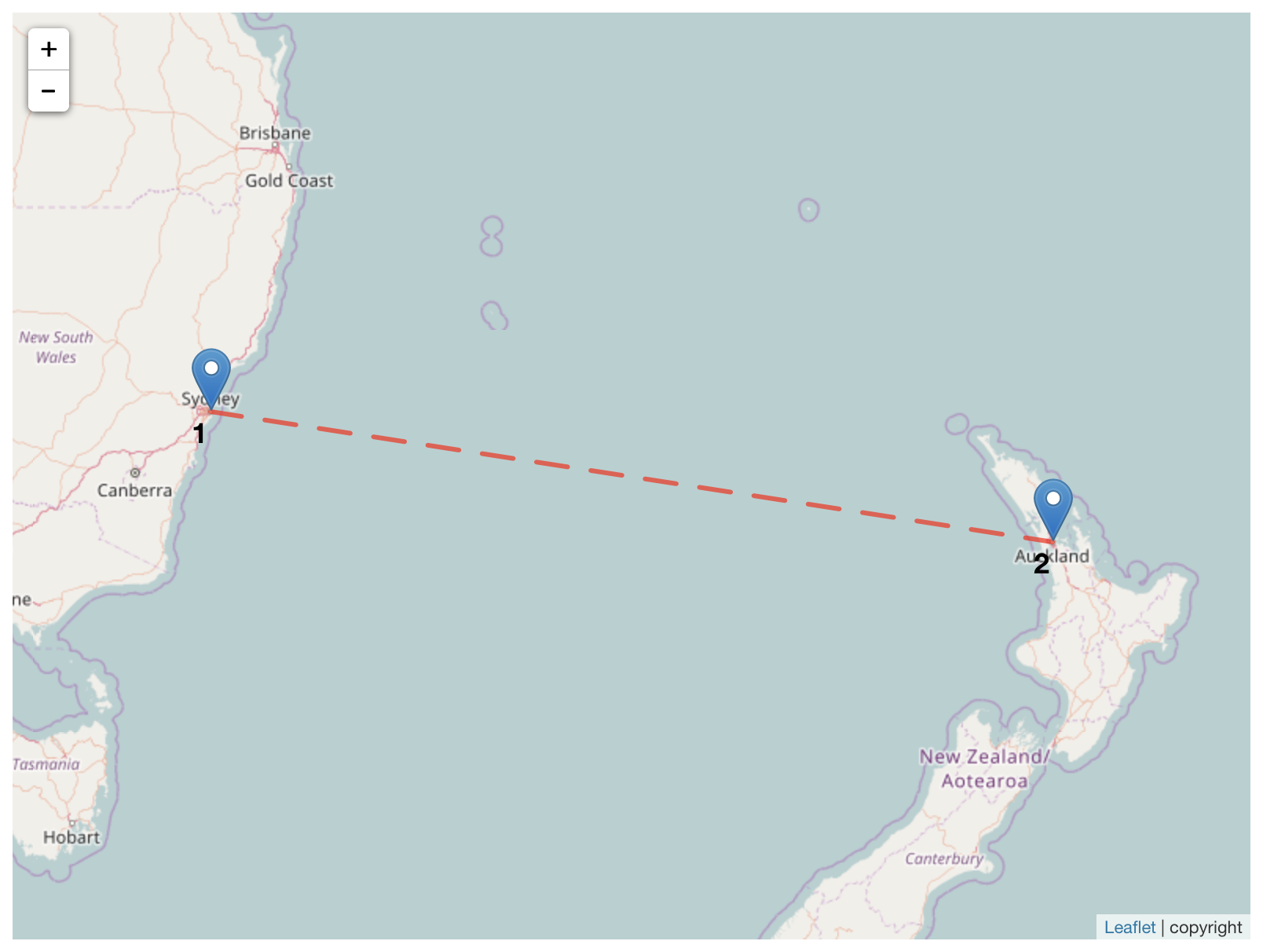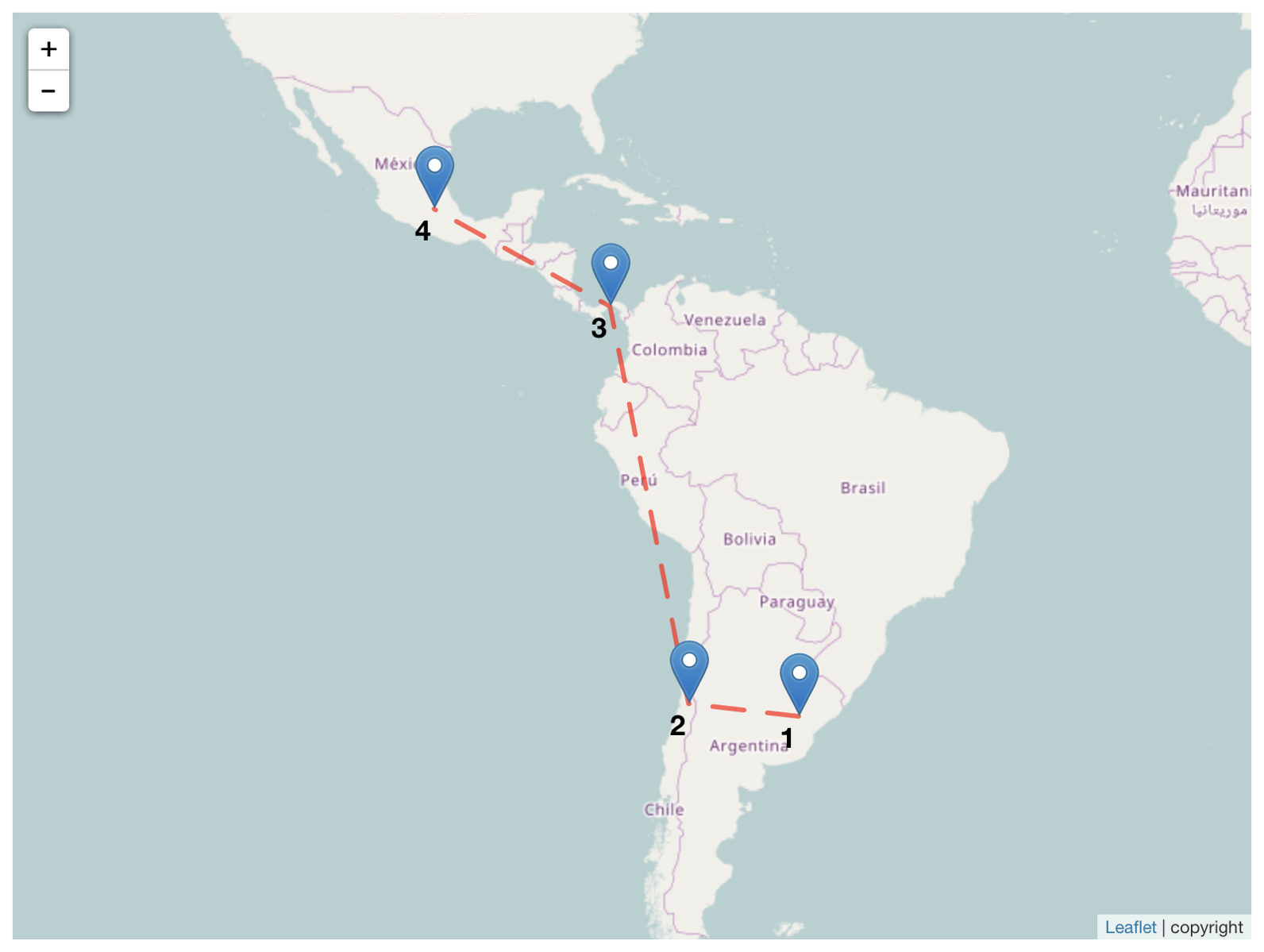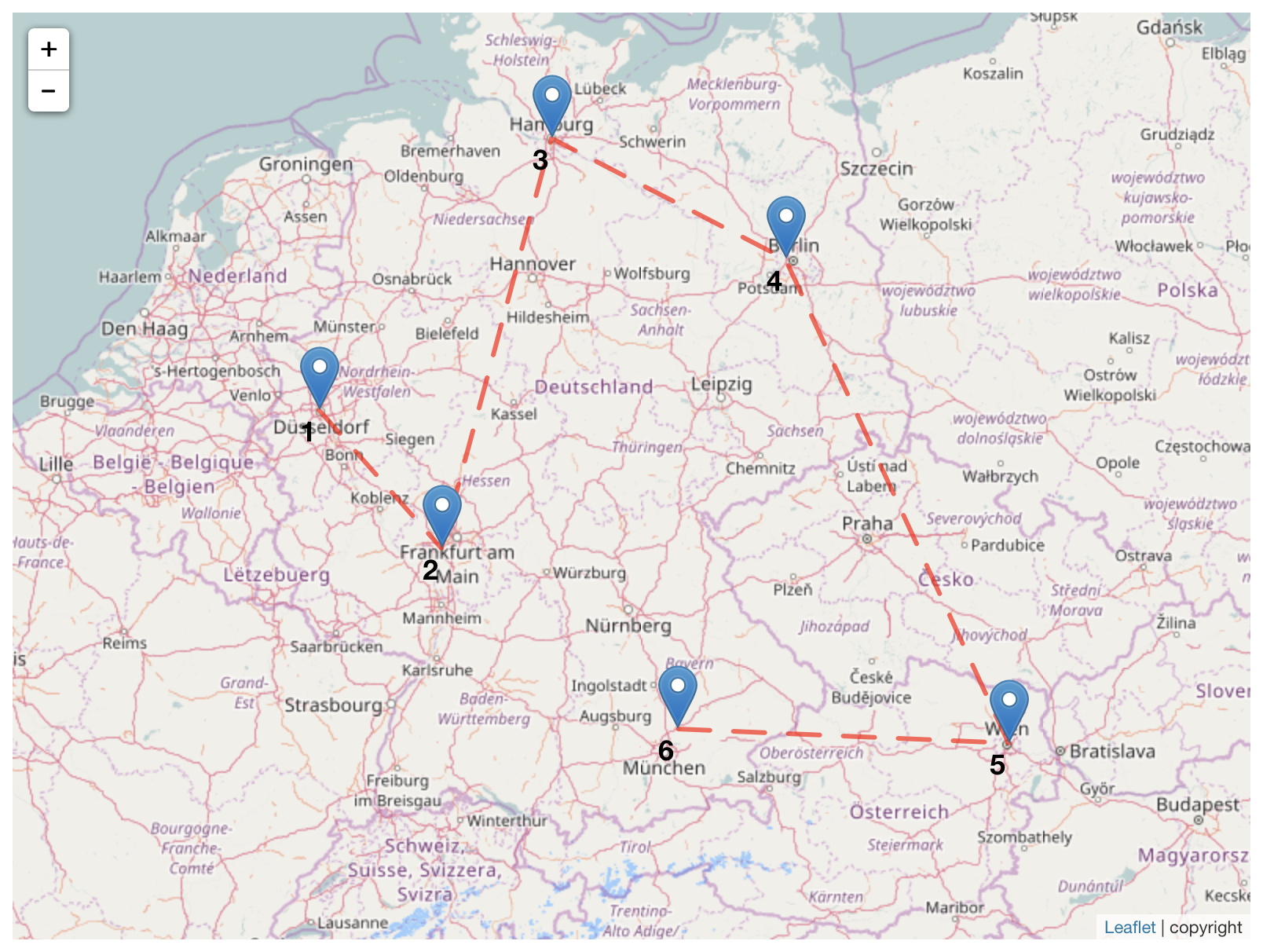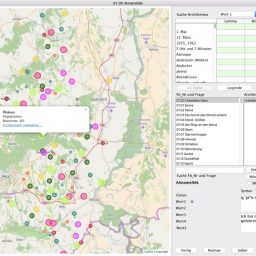As long as there is nothing better, we organise the travelling people by ZIP-code. In Germany the first 2 numbers are easy to use and work well, dividing the country into some 100 regions.
If your salespeople are more local, the zip-code is of no use anymore. People who know their region well, organise their routes without really thinking about. Does someone in the office the appointments, I better rely on technical help.
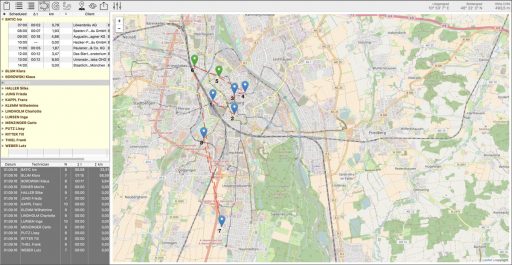
This is a tour crossing Augsburg, Bavaria.
Here a different region. Obviously not the best route, when sortet by zip and alphabet,
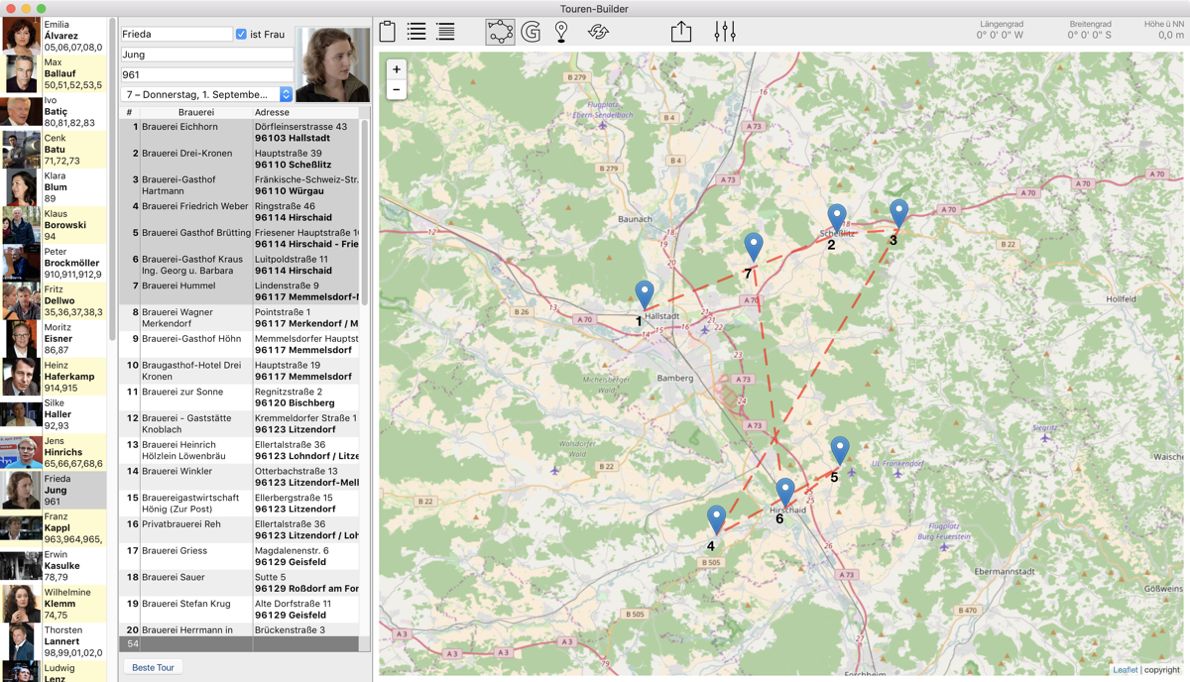
This is the same selection optimised for shortest distances:
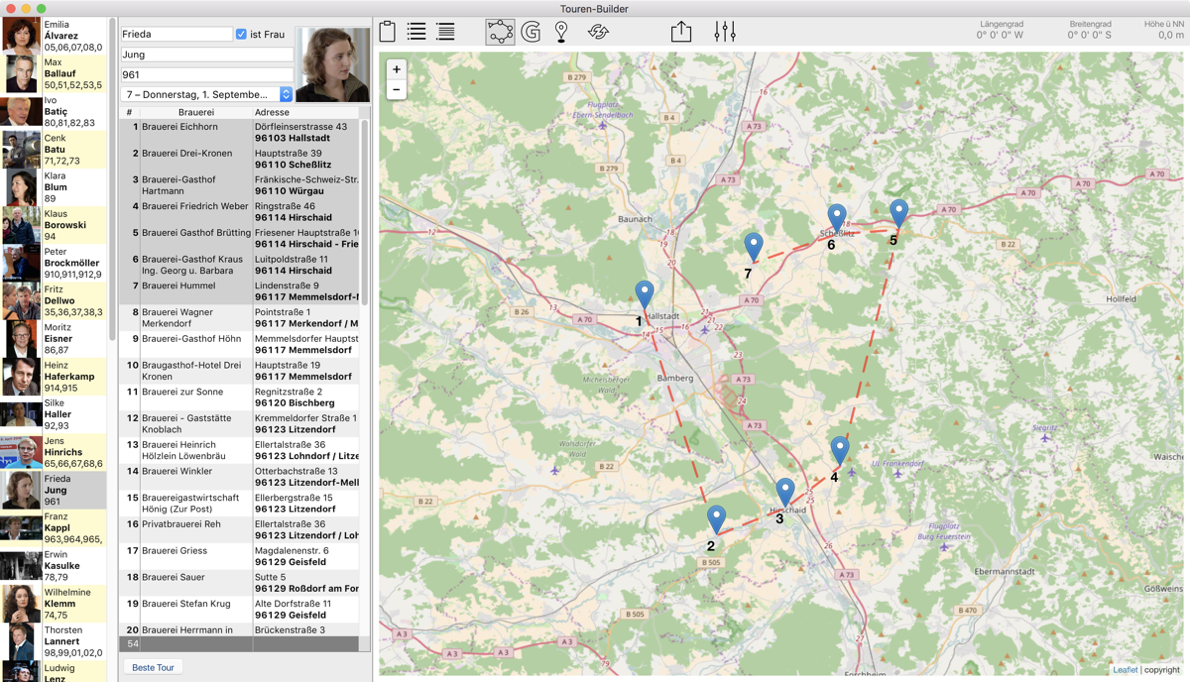
And this shows the same travel on real roads:
